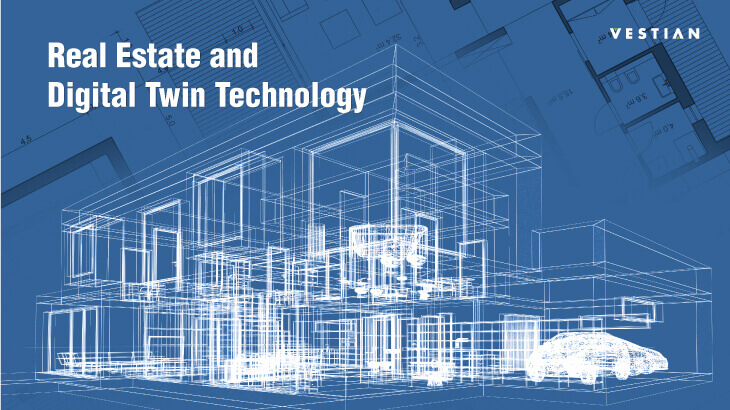Digital twin technology, while having been around since the 1960s, has only recently gathered much momentum across various industries. In the case of RE industry its adoption has been painfully slow, but the onset of the pandemic has shaken the industry out of its stupor, and much focus is being paid to technology and its applications in the RE industry. As the name suggests, digital twin is a digital replica of a physical entity , where BIM data, information, visuals, and intelligence combined together take on the characteristics and operations of the physical environment it represents. Today, we have the technology to create a digital replica of physical entities to facilitate acceleration and automation of conventional processes of design, construction, and operation. This replica, also known as a ‘Digital Twin’ is essentially a virtual model of the building, uses sensors, drones, and other wireless technology to collect various layers of information. The twin acquires insights about the performance, operational efficiency, and overall profitability of the building through various machine learning algorithms and acts as an easily accessible tool to enhance decision making and operational efficiency.
While still in a nascent stage, industry experts believe twin tools will soon come at the forefront of the RE industry, be it design, construction, or managing the built environment.
Here’s a quick look at the various applications of the Digital Twin Technology –
Modular Construction – One of the most prominent benefits of this technology is that it will allow the production of various pieces of a structure in an off-site factory, to be assembled on-site, and to be disassembled and reused as and when required.
Performance Analysis – Once a property is built and operational, the digital replica can monitor real-time performance and operational efficiency, thus pointing out the need for tweaks with enhanced precision.
Accident Prevention – HVAC, Water Supply, and Electrical Circuits are usually systems in a building that are most prone to serious, large scale mishaps/ glitches/ disruptions. Digital twins can often accurately predict any latent failures in these systems thus saving resource costs and averting preventable shutdowns.
Data Analytics – Over the course of use, Digital Twins can offer precise data analytics that can assist designers and developers to create layouts that are conducive to the original requirement of the facility. In case of retail, it can help create layout based on shoppers buying path etc , thus ensuring greater profitability through informed decision making.
Real-Time Monitoring – Digital Twin Technology enables 4D Building Information Modelling (4D BIM), which allows real-time monitoring of the construction progress as against the projected timelines.
Cost-Saving – Digital Twins have the capacity to learn, analyse and predict space, equipment, and staffing needs. If they predict the required number of rooms/spaces, machinery, or staff to be lower than anticipated, developers and facility owners can save on a considerable amount of money.
Now that the pandemic has become an innate aspect of life in general, and we are coming to terms with a world of remote working, social distancing, and limited travel, a digital twin will prove to be a boon for property owners. Right from facilitating management and operations of the property, to offering remote access to various records of the design installations and service requirements about the structure, a twin can offer it all with incredible ease. This will significantly reduce the onus of managing and maintaining this data, especially in case of a change or transfer of ownership.
Like with everything else, Digital Twin Technology too, has its own teething problems.
To begin with, the cost of creating and managing a Digital Twin may not be viable for all construction types. Secondly, this technology is not a simple buy-and-use product. It is rather something that developers need to invest time and money in, while also ensuring ample training to the team. Then again, more than the deployment of the technology, gathering information, evaluating it, and putting it to use effectively will prove to be a challenge for many developers who have been comfortable working with the traditional models.
Having said that, advancement in technology and better connectivity, will only go on to add further depth to the digital twin, substantially improving operational efficiency, providing cost-effectiveness and mitigating risks.
